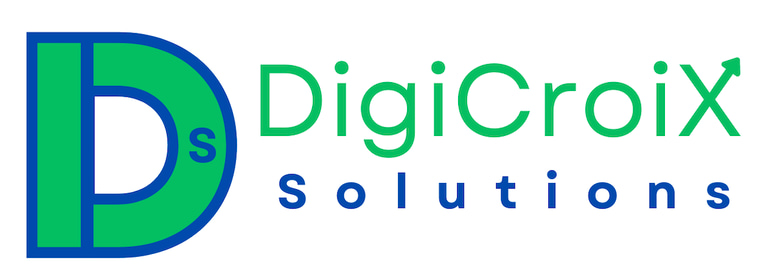Effective Medical Advertising Channels Explained
Learn which medical advertising channels—display, pay‑per‑click, social—are most effective for specialist clinics. We break down costs, reach, and conversion. Book a 1‑hour call to customize your mix.
Vishwa Raval
10/2/20254 min read


Introduction to Medical Advertising
Medical advertising refers to the variety of strategies and tools utilized by healthcare providers, including specialist clinics, to promote their services, reach prospective patients, and ultimately enhance their practice. In an increasingly competitive healthcare landscape, the importance of effective medical advertising cannot be overstated. With the rise of digital technologies, healthcare providers must adapt their advertising strategies to reach their audiences more effectively.
The current landscape of medical advertising is marked by rapid changes driven by advancements in technology and shifts in patient behavior. Today, potential patients are more informed and proactive in their healthcare decisions than ever before, often seeking information online before making appointments. This transformation highlights the necessity for healthcare organizations to establish a robust online presence through various advertising channels, such as search engines, social media, and digital content marketing.
Emerging technologies, including artificial intelligence and data analytics, are further revolutionizing medical advertising by enabling healthcare providers to create personalized marketing strategies. These solutions allow clinics to better understand patient demographics, preferences, and behaviors, ultimately leading to more efficient targeting and higher engagement rates. As patient-centric approaches to healthcare continue to gain traction, it becomes imperative for specialists to embrace innovative advertising practices that resonate with their target audience.
Moreover, trends such as telemedicine and mobile health applications have reshaped the way patients interact with healthcare services, prompting clinics to rethink their advertising techniques. As traditional media channels lose their effectiveness, the focus has shifted to digital platforms where patients are likely to engage and receive information. By recognizing these trends and incorporating them into their advertising strategies, healthcare providers can significantly enhance their visibility, attract new patients, and retain existing ones.
Overview of Advertising Channels
In the modern healthcare landscape, medical practices have access to various advertising channels that can significantly enhance their outreach efforts. Understanding these channels is essential for specialist clinics aiming to attract new patients and retain existing ones. The primary medical advertising channels include display advertising, pay-per-click (PPC) advertising, and social media advertising, each possessing its unique attributes.
Display advertising involves creating visually appealing banner ads that are placed on websites frequented by potential patients. These ads can often be tailored to specific demographics, allowing clinics to target specific segments of the population. Display advertising is particularly effective for brand awareness, as it reaches users during their browsing experience, which can lead to increased traffic to the clinic's website.
PPC advertising, on the other hand, operates on a cost-per-click basis, meaning that the clinic only pays when a user clicks on the ad. This approach allows for precise targeting based on keywords and location, making it a valuable tool for attracting individuals actively searching for medical services. With real-time analytics, clinics can effectively track performance and adjust their campaigns based on engagement metrics.
Social media advertising encompasses a variety of platforms, including Facebook, Instagram, and Twitter. These platforms allow healthcare providers to foster a direct connection with their audience, promoting services and sharing valuable content. The unique feature of social media advertising lies in its interactive nature, enabling clinics to engage patients more personally through comments, shares, and likes. Social media channels also provide advanced targeting options, where ads can be directed towards specific interests, behaviors, or demographics.
In summary, while each of these medical advertising channels—display, PPC, and social media—offers distinct functionalities, they also present different opportunities for audience engagement and targeting. Understanding these differences can help clinics to implement more effective advertising strategies tailored to their goals.
Cost Analysis and Budgeting for Medical Advertising
In the evolving landscape of healthcare marketing, understanding the cost structures associated with various advertising channels is paramount for specialist clinics. The effectiveness of medical advertising can largely determine a clinic's patient inflow, making an astute analysis of budget allocation essential. Different channels, including online platforms, print media, and direct mail campaigns, exhibit varying costs that require careful consideration and strategic planning.
When evaluating these advertising avenues, clinics must assess not only the initial investment but also the potential return on investment (ROI). For instance, digital advertising—particularly through pay-per-click campaigns—can offer precise targeting and measurable results. This makes it easier for healthcare providers to track both expenditure and the effectiveness of their marketing efforts, leading to better budget decisions based on conversion rates and audience engagement.
Print media and traditional advertisements often entail higher upfront costs but may produce broader reach among certain demographics, especially older populations. Therefore, it is important for clinics to balance their budgets against expected ROI from each channel while considering the characteristics of their target audience. For geographically focused advertising, local publications may provide good results, albeit with varied costs compared to more general platforms.
Allocating funds effectively across channels requires an understanding of patient demographics. Specialty clinics may find it beneficial to invest more heavily in platforms that yield higher conversion rates specific to their services, ensuring that they effectively reach their desired patient population. This targeted approach not only maximizes budget utility but also enhances the overall effectiveness of medical advertising campaigns.
Ultimately, a strategic blend of various advertising methods, informed by concrete data and analysis, will empower clinics to make sound financial decisions and foster greater patient engagement.
Customization and Strategic Implementation
In the realm of medical advertising, customization and strategic implementation of the advertising mix play a critical role in achieving optimal results for specialist clinics. Each clinic possesses unique characteristics, and understanding these specifics is foundational for crafting a tailored advertising strategy that effectively reaches its target audience. By analyzing demographic data, patient behaviors, and competitive landscape, clinics can identify the most suitable channels and methods for communication.
Combining various advertising channels amplifies reach and conversion rates. For instance, integrating digital platforms such as social media and search engine marketing with traditional approaches, like print media and community events, creates a robust ecosystem that caters to diverse patient preferences. Furthermore, utilizing targeted campaigns can significantly enhance engagement. For example, employing geo-targeted advertisements allows clinics to reach potential patients within specific locales, making the communication more relevant and compelling.
Expert tips for creating targeted campaigns include utilizing precise audience segmentation based on health needs, establishing clear messaging that resonates with potential patients, and leveraging testimonials and case studies to build trust. Additionally, employing A/B testing can provide insightful data regarding which ads perform best, enabling continuous optimization. Beyond initial implementation, it is crucial for clinics to establish a routine assessment process that evaluates the performance of advertising strategies. By analyzing metrics such as engagement rates, conversion figures, and overall ROI, clinics can make informed decisions to adapt their marketing efforts accordingly.
For those seeking personalized guidance in customizing their advertising strategies, booking a 1-hour consultation can provide tailored insights and actionable recommendations. Emphasizing continuous assessment and adaptation ensures that clinics remain responsive to market changes and patient needs, thereby optimizing their advertising effectiveness over time.
Get in Touch
Book your free consultation today and let's create a strategy to elevate your success!


Address
94 Shree Nagar Apartment, Sola Road, Naranpura, Ahmedabad, Gujarat, India 380063
6706 Fulton Avenue, Burnaby, BC, Canada V5E 3H1
Phone
+91 88497 12474
Quick Links
© 2025. All rights reserved.
Useful Links
Engagement
Subscribe
+91 88497 12474
